Glomus hoi
Voucher Specimen
This description is a combination of information obtained from the protologue (Berch and Trappe, 1985), type specimens, and universal patterns of morphological organization and structure in Glomaceae. A living culture of this species has never been obtained by INVAM.
Spores are borne singly in the soil; globose, subglobose, ellipsoidal or irregular in shape; (50-) 80-120 (-155) x (45-) 75-120 (-140) µm diam; and light brown in color.
The spore wall is composed of two distinct, separable layers (L1 and L2). The outer layer (L1) is light yellow to orange-yellow in color under transmitted light; (2-) 4-6 (-8) µm thick, with an outer surface that fractures and sloughs. The inner layer (L2) is hyaline to light yellow, very thin, 1 um thick.
The subtending hypha is single; cylindrical or slightly flared toward the point of attachment, (5-) 8-11(-13) µm wide at the spore base. The hyphal wall consists of a single layer, 2.5-5 µm thick, sometimes bearing fine, thin-walled, septate, lateral branches.
The occlusion appears to be a thin, curved septum in the hypha lumen at or somewhat below its point of attachment to the spore.
| Type specimens | Hyphae of type | |||
|---|---|---|---|---|
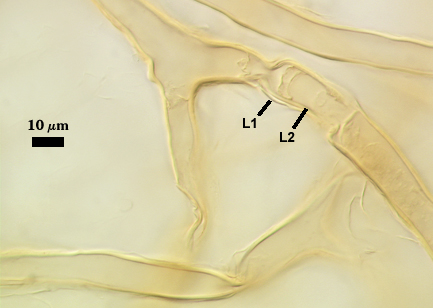 | 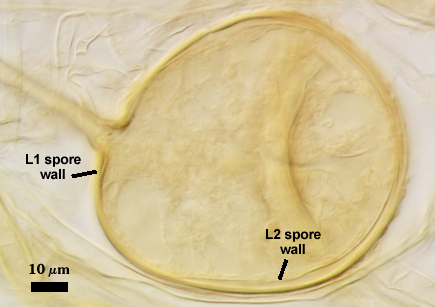 | 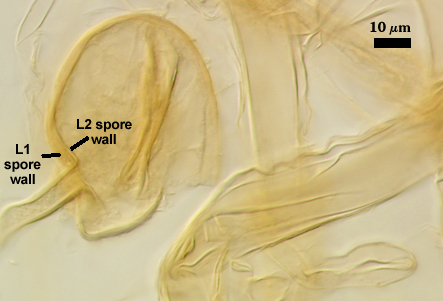 | 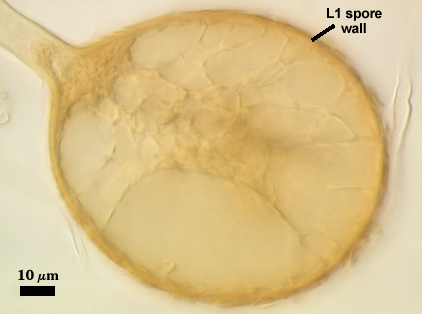 | 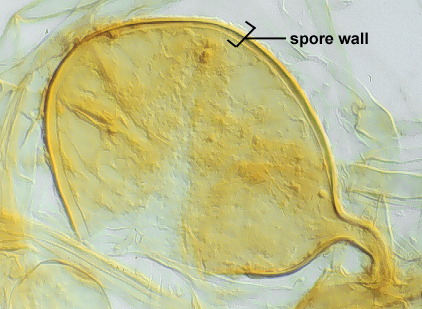 |
Links to Gene Sequences in Genbank
Reference
- Berch, S. M. and J. M. Trappe. 1985. A new species of Endogonaceae, Glomus hoi. Mycologia 77:654-657.